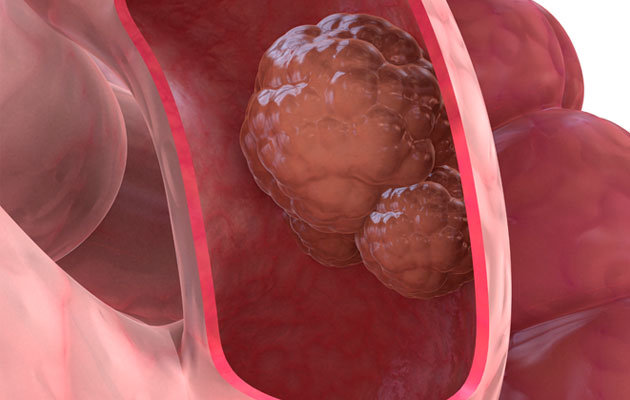Protein’s impact on colorectal cancer is dappled
Researchers at University of California, San Diego School of Medicine have discovered a cell signaling pathway that appears to exert some control over initiation and progression of colorectal cancer, the third leading cause of cancer-related death in the United States. A key protein in the pathway also appears to be predictive of cancer survival rates.
The study is reported in the June 30 issue of eLife.
The protein, known as Dishevelled-associating protein with a high frequency of leucine residues or Daple, is produced by nearly all healthy cells in the body and is well-recognized for its role in helping cells in different tissues coordinate processes, such as development and maintenance of organs.
The study is the first to show that Daple is also a tumor suppressor, though only in the early stages of cancer. At later stages of disease, when cancer cells have escaped from the main tumor and are circulating in the blood stream, the protein may actually make cancer cells more invasive and likely to spread.
“Daple is a double-edged sword,” said senior author Pradipta Ghosh, MD, an associate professor of medicine. “The protein is a tumor suppressor early on but heralds faster death in advanced stages of colorectal cancer. We are working to figure out why.”
For the study, researchers analyzed tumor samples from 173 persons with stage 2 colon cancer for Daple levels. Among these people, lower Daple levels were associated with worse outcomes over a two-year period, while higher levels were associated with better patient survivorship over the same period.
 Daple levels were then measured in cancer cells collected from the blood stream of 51 stage 4 colorectal cancer patients. Among these late-stage cancer patients, those with high Daple levels had a 20 percent survivorship over a 1,000-day period, compared with a 100 percent survivorship for those with low Daple levels. By the three-year mark, there were no survivors in the high-Daple group. In contrast, among those with low-Daple expression, 75 percent of the patients were still alive.
Daple levels were then measured in cancer cells collected from the blood stream of 51 stage 4 colorectal cancer patients. Among these late-stage cancer patients, those with high Daple levels had a 20 percent survivorship over a 1,000-day period, compared with a 100 percent survivorship for those with low Daple levels. By the three-year mark, there were no survivors in the high-Daple group. In contrast, among those with low-Daple expression, 75 percent of the patients were still alive.
Consistent results were observed during 3D tumor cell culture tests. Reduced expression of Daple aided tumor formation and growth, while increased Daple expression triggered cancer cell motility, associated with metastasis.
Fluorescent imaging studies of cells showed that Daple functions primarily by regulating the activity of a family of cell-signaling proteins, known as G proteins. G proteins enable cells to sense and respond to what is happening around them. About 30 percent of all prescription drugs affect cells via G-protein-coupled receptors.
The UC San Diego-led team reported that it is G protein signaling that likely conveys both the desirable tumor-suppressing effects and the not-so-desirable tumor-spreading effects. The consequences of this G signaling on cancer patients’ prognosis thus depends on where and when the G signaling occurs.
“Our next challenge is to figure out how we can exploit Daple’s beneficial attributes while inhibiting its negative ones,” Ghosh said.
###
The study was funded, in part, by the National Institutes of Health (grant R01CA160911), Burroughs Wellcome Fund and American Cancer Society.
Co-authors include Nicolas Aznar, Krishna Midde, Ying Dunkel, Inmaculada, Lopez-Sanchez, Yelena Pavlova, Fiona Murray, and Karl Willert, UC San Diego; Arthur Marivin, and Mikel Garcia-Marcos, Boston, University; Jorge Barbazán, and Miguel Abal, Health Research Institute of Santiago de Compostela; Ulrich Nitsche, and Klaus-Peter Janssen, Technische Universität München; and Ajay Goel, Baylor Research Institute.
###
Scott LaFee
slafee@ucsd.edu
619-543-6163